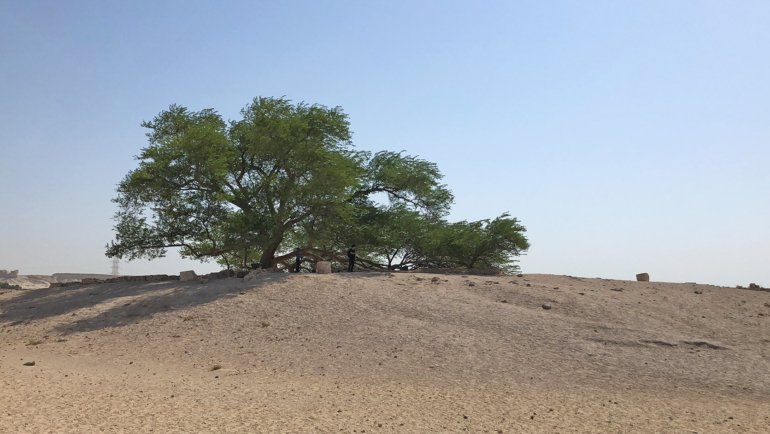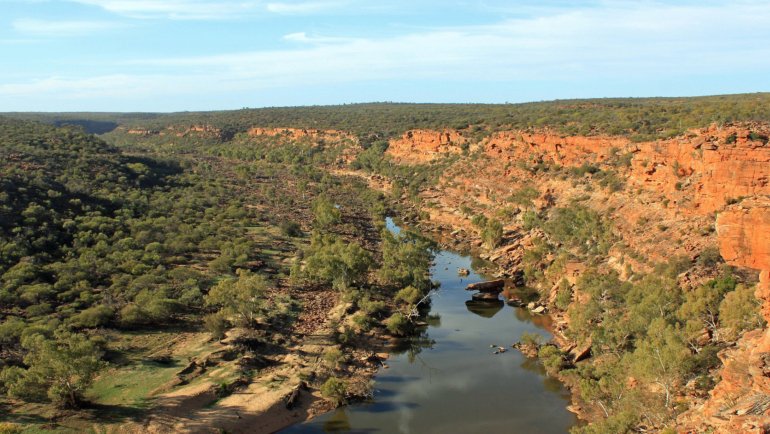Algeria is known for its vast and diverse landscapes, ranging from the Sahara Desert to the Atlas Mountains. This has led to a rich and diverse ecosystem with many incredible wild animals.
It is estimated that over 100 mammal species, more than 300 bird species, and numerous reptile, amphibian, and insect species are found within its borders. However, the exact number of wild animals found in Algeria is difficult to determine because there are likely still species that need to be discovered or documented.
Some of Algeria’s most iconic wild animals include the Barbary macaque, cheetah, fennec fox, addax, and various species of gazelles, wild boar, and hyenas. Algeria is also home to various bird species, including raptors, waterfowl, and songbirds.
Additionally, some species, such as the North African elephant and the Atlas bear, are now extinct, while others, such as the Barbary macaque and the cheetah, are endangered or threatened.
Below is a list of 10 wild animals in Algeria.
1. Fennec Fox
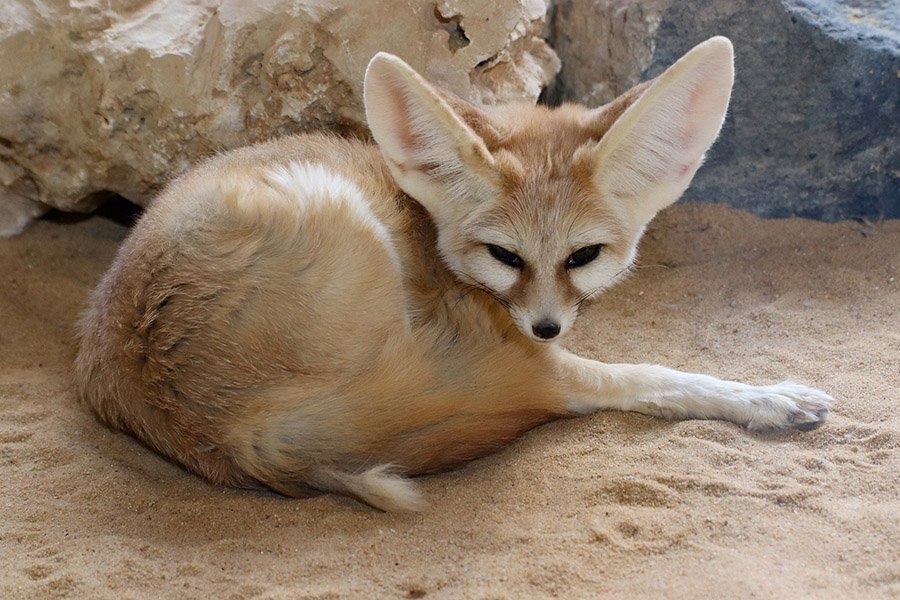
- Scientific name: Vulpes zerda
- Type of animal: Mammal
- Where found in the country: Sahara Desert
- Conservation status: Least Concern
The Fennec Fox is the national animal of Algeria. It is a small nocturnal fox in Algeria’s Sahara Desert and other parts of North Africa.
They are known for their distinctive large ears, which they use to regulate their body temperature, and their ability to dig deep underground burrows to escape the heat of the desert.
★ Did you know? Fennec foxes can go for an indefinite amount of time without drinking water. Fennec Foxes can go for long periods without water, getting most of their moisture from the food it eats. This makes it possible for them to survive in one of the harshest environments on Earth.
2. Saharan Cheetah
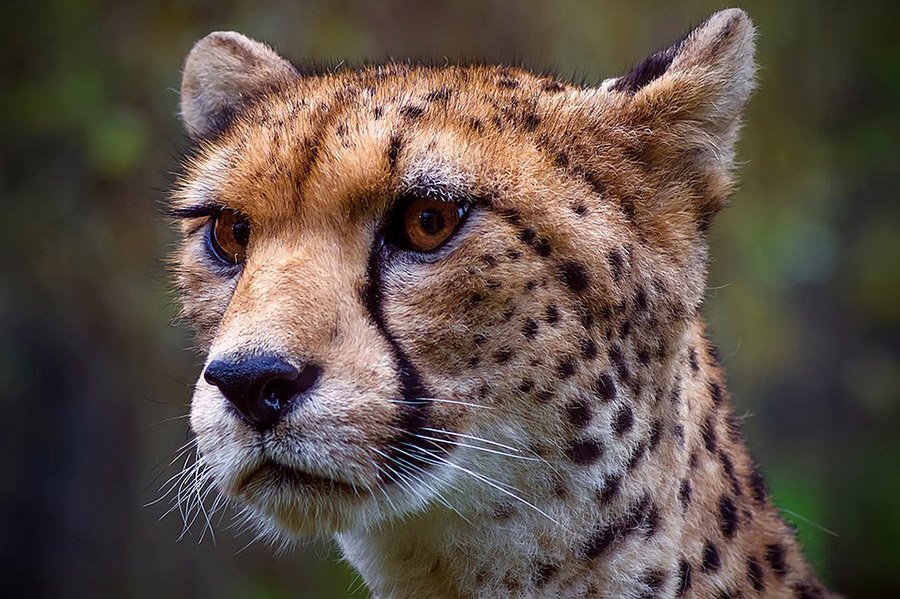 Source: Wikimedia Commons
Source: Wikimedia Commons- Scientific name: Acinonyx jubatus hecki
- Type of animal: Mammal
- Where found in the country: Algeria’s Sahara Desert
- Conservation status: Critically Endangered
Commonly known as the Northwest African cheetah, the Saharan Cheetah is a critically endangered subspecies of cheetah found in Algeria’s Sahara Desert. It is estimated that fewer than 250 individuals remain in the wild, making it one of the rarest large cats in the world.
The Saharan cheetah has a light sandy-brown coat that blends in with the desert landscape, and its slender build and long legs make it an extremely fast runner, capable of reaching speeds of up to 70 miles per hour.
★ Did you know? The Saharan cheetah is more likely to stalk its prey from a distance rather than relying on a high-speed chase. Unlike other cheetahs, the Saharan cheetah scans the horizon for prey.
3. Addax
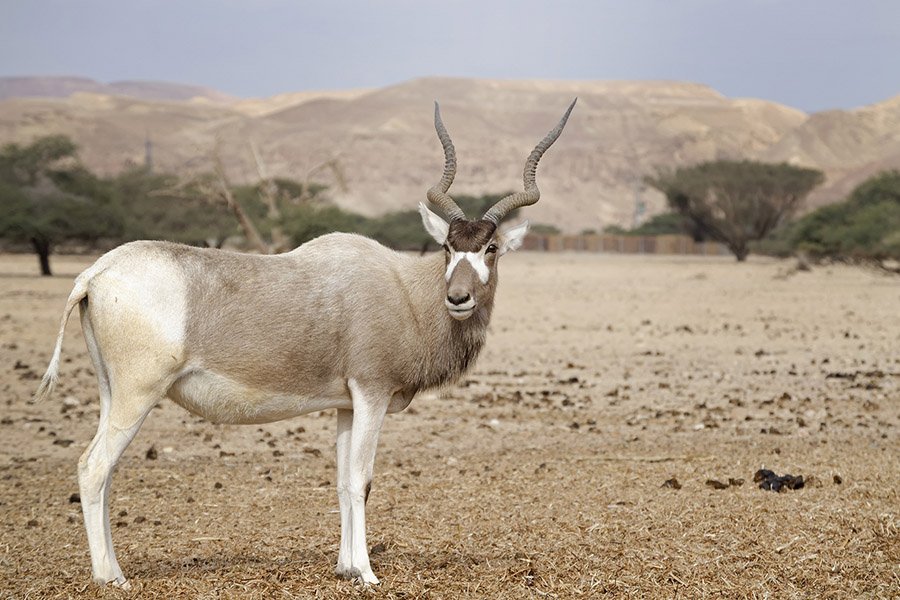
- Scientific name: Addax nasomaculatus
- Type of animal: Mammal
- Where found in the country: Sahara Desert
- Conservation status: Critically Endangered
The addax is a critically endangered antelope species native to the Sahara Desert in North Africa. It is also known as the white antelope, screw-horn antelope, and addra antelope.
The addax is well adapted to its harsh desert environment and can go without water for long periods by obtaining moisture from plants.
★ Did you know? The addax is sometimes called the “screwhorn antelope” because of the unique spiral shape of its horns. The horn shape is believed to be an adaptation for defending against predators in the harsh desert environment. The horns can grow over three feet long and are typically present in males and females.
4. Side-Striped Jackal
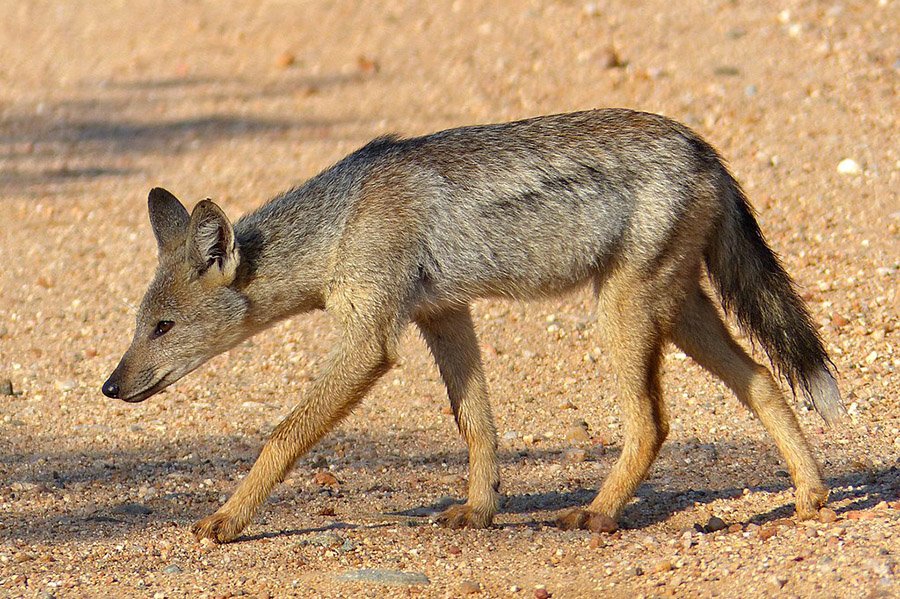 Source: Wikimedia Commons
Source: Wikimedia Commons- Scientific name: Lupulella adusta
- Type of animal: Mammal
- Where found in the country: Algerian desert and particularly in savannah and woodland habitats
- Conservation status: Least Concern
The side-striped jackal is a small to medium-sized carnivorous mammal found in various parts of sub-Saharan Africa. It is one of three species of jackals, the others being the golden jackal and the black-backed jackal.
The side-striped jackal derives its name from the two stripes that run from the back of its neck down its sides. It has large, pointed ears and a bushy tail. Its coat is generally yellowish-brown with a whitish underbelly.
★ Did you know? Side-striped jackals have been observed exhibiting a unique behavior called “anting.” This involves picking up ants or other insects with their mouths and then rubbing their bodies with the insects, sometimes even crushing them.
It’s not entirely clear why side-striped jackals engage in this behavior, but it may be a form of insecticide or a way to stimulate the production of oils in the fur that repels insects.
5. Barbary Macaque
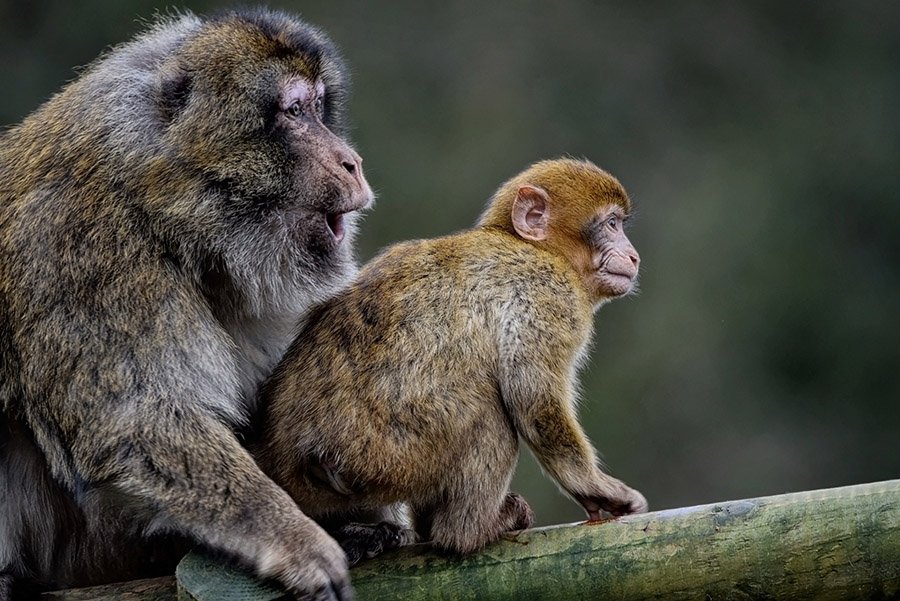
- Scientific name: Macaca sylvanus
- Type of animal: Mammal
- Where found in the country: Grande and Petite Kabylia, ranges that form part of the Atlas Mountains. They can also be found in Chrea National Park.
- Conservation status: Endangered
The Barbary Macaque, also known as the Barbary ape, is a species of Old World monkey found in the Atlas Mountains of Algeria. They are known for their distinctive reddish-brown fur and cheek pouches, which they use to store food.
Barbary macaques are highly social animals and live in troops consisting of several females and their offspring, along with one or more dominant males.
They are also known for their intelligence and adaptability and have been observed using tools and showing signs of self-awareness.
6. North African Ostrich
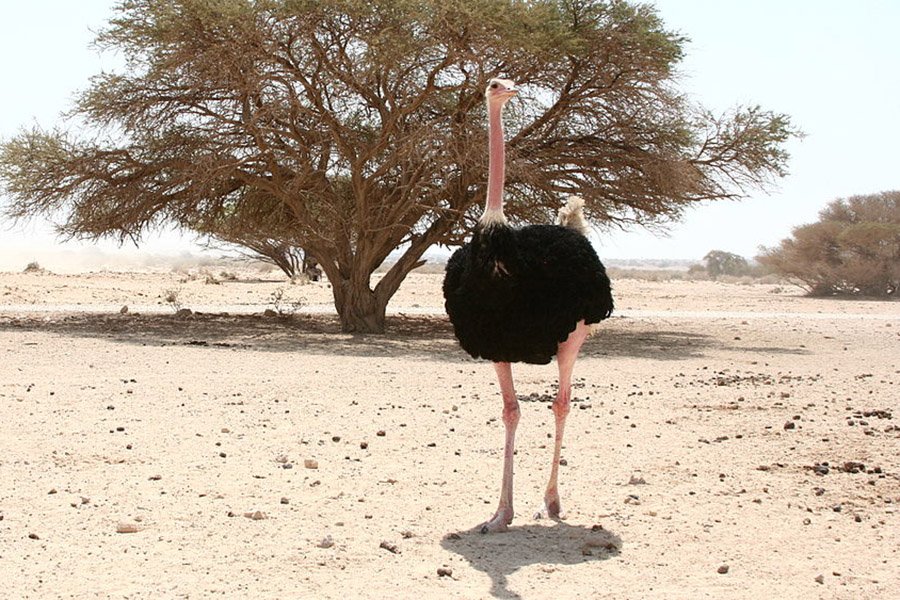 Source: Wikimedia Commons
Source: Wikimedia Commons- Scientific name: Struthio camelus camelus
- Type of animal: Bird
- Where found in the country: Deserts and savannas of Algeria
- Conservation status: Critically Endangered
Also known as the red-necked ostrich or the Barbary ostrich, the North African ostrich is a subspecies of ostrich native to North Africa. It is one of the two extant subspecies of ostriches found in the wild, with the other being the Somali ostrich.
The North African ostrich has distinctive red skin on its neck and legs, which sets it apart from other ostrich subspecies. The males are typically larger than the females, can weigh up to 150 kg (330 lbs), and stand up to 2.75 m (9 ft) tall. The females are slightly smaller, weighing up to 120 kg (265 lbs) and standing up to 2.4 m (8 ft) tall.
★ Did you know? The North African ostrich has the largest eyes of any land animal, with an eye diameter of up to 5 cm (2 inches). They need large eyes to scan the vast, open landscapes of the desert to detect predators and other threats.
7. Blue Shark
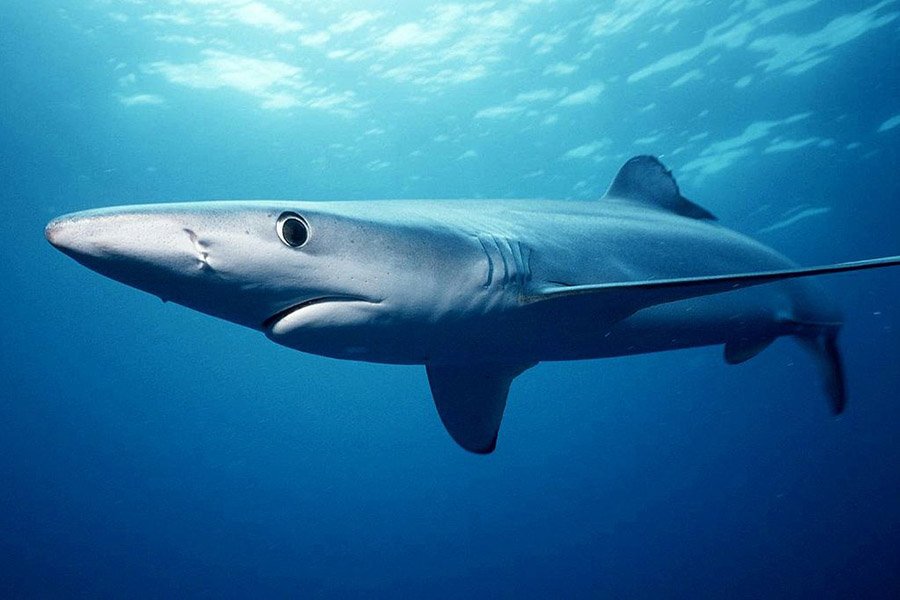 Source: Wikimedia Commons
Source: Wikimedia Commons- Scientific name: Prionace glauca
- Type of animal: Fish
- Where found in the country: In the Mediterranean Sea, which borders the country’s northern coast.
- Conservation status: Near Threatened
The blue shark, also known as the great blue shark, is a species of shark found in many parts of the world’s oceans, including the Atlantic, Indian, and Pacific oceans. It is known for its distinctive blue-grey coloration and slender, streamlined body shape.
Blue sharks are considered apex predators and play an important role in the marine ecosystem. They primarily feed on small fish and squid but have been known to eat larger prey such as tuna and other sharks.
Blue sharks have a unique ability to regulate their body temperature, which allows them to swim in a wide range of ocean temperatures.
★ Did you know? Blue sharks are the most migratory of all sharks. They have been recorded traveling up to 4,000 miles (6,400 kilometers) in a single year.
8. Jerboa
 Source: Wikimedia Commons
Source: Wikimedia Commons- Scientific name: family Dipodidae
- Type of animal: Mammal
- Where found in the country: Sahara Desert and other sandy areas, such as Tassili n’Ajjer National Park and Ahaggar Mountains
- Conservation status: Data Deficient
Jerboa is a small nocturnal rodent that belongs to the family Dipodidae, which includes jumping rodents. About 33 species of jerboa are found in the deserts and drylands of North Africa, the Middle East, and Central Asia.
Jerboas are known for their unique adaptations to their arid environment. They have long hind legs and a long tail that helps them jump up to 10 feet in a single leap, a remarkable feat for an animal of their size.
Their large ears help them to detect predators, and their burrows help them to escape the harsh desert temperatures during the day.
★ Did you know? Jerboas are known for their long tails, which can be longer than their heads and bodies combined.
9. North African Boar
 Source: Wikimedia Commons
Source: Wikimedia Commons- Scientific name: Sus scrofa algira
- Type of animal: Mammal
- Where found in the country: The Tell Atlas, the Saharan Atlas, and the Aures Mountains
- Conservation status: Least Concern
Commonly known as the Barbary or Atlas boar, the North African boar is a wild boar subspecies found in North Africa, particularly in the Atlas Mountains. It is considered one of the largest and most aggressive subspecies of wild boar.
North African boars are typically dark brown or black, with bristly hair and long, curved tusks. They are known for their strength, speed, and agility and are considered formidable prey for hunters.
★ Did you know? The Berber people who lived in the Atlas Mountains considered the North African boar a sacred animal in ancient times. They believed that the boar had powerful spiritual qualities and was a symbol of strength and bravery. As a result, the boar was often depicted in Berber art and folklore and was sometimes used as a totem animal by Berber tribes.
10. Cuvier’s Gazelle
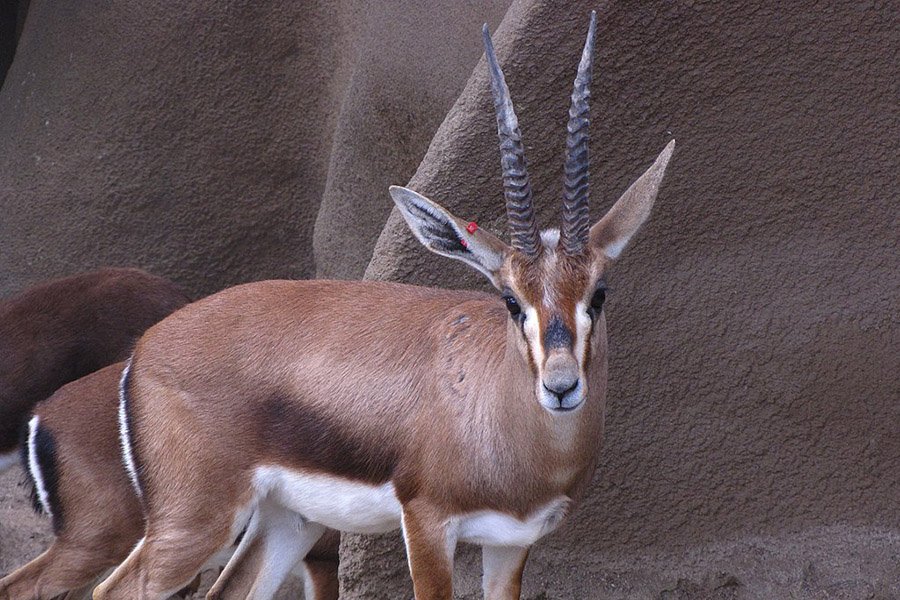 Source: Wikimedia Commons
Source: Wikimedia Commons- Scientific name: Gazella cuvieri
- Type of animal: Mammal
- Where found in the country: Hills and plateaus of the Atlas Mountains. They are also found in protected areas such as the Tassili n’Ajjer National Park, Ahaggar National Park, El-Bayadh National Park, and the Beni-Snassen Mountains
- Conservation status: Vulnerable
Cuvier’s gazelle is a small, desert-dwelling antelope species in North Africa, particularly in the Sahara and Sahel regions. The species is named after the French naturalist Georges Cuvier, who first described it.
Cuvier’s gazelles are adapted to living in arid and semi-arid environments, where they feed on various desert plants, such as acacia leaves and thorny bushes.
★ Did you know? Cuvier’s gazelles can go for long periods without drinking water. They obtain most of their moisture from the plants they eat, and their kidneys are adapted to conserve water.

